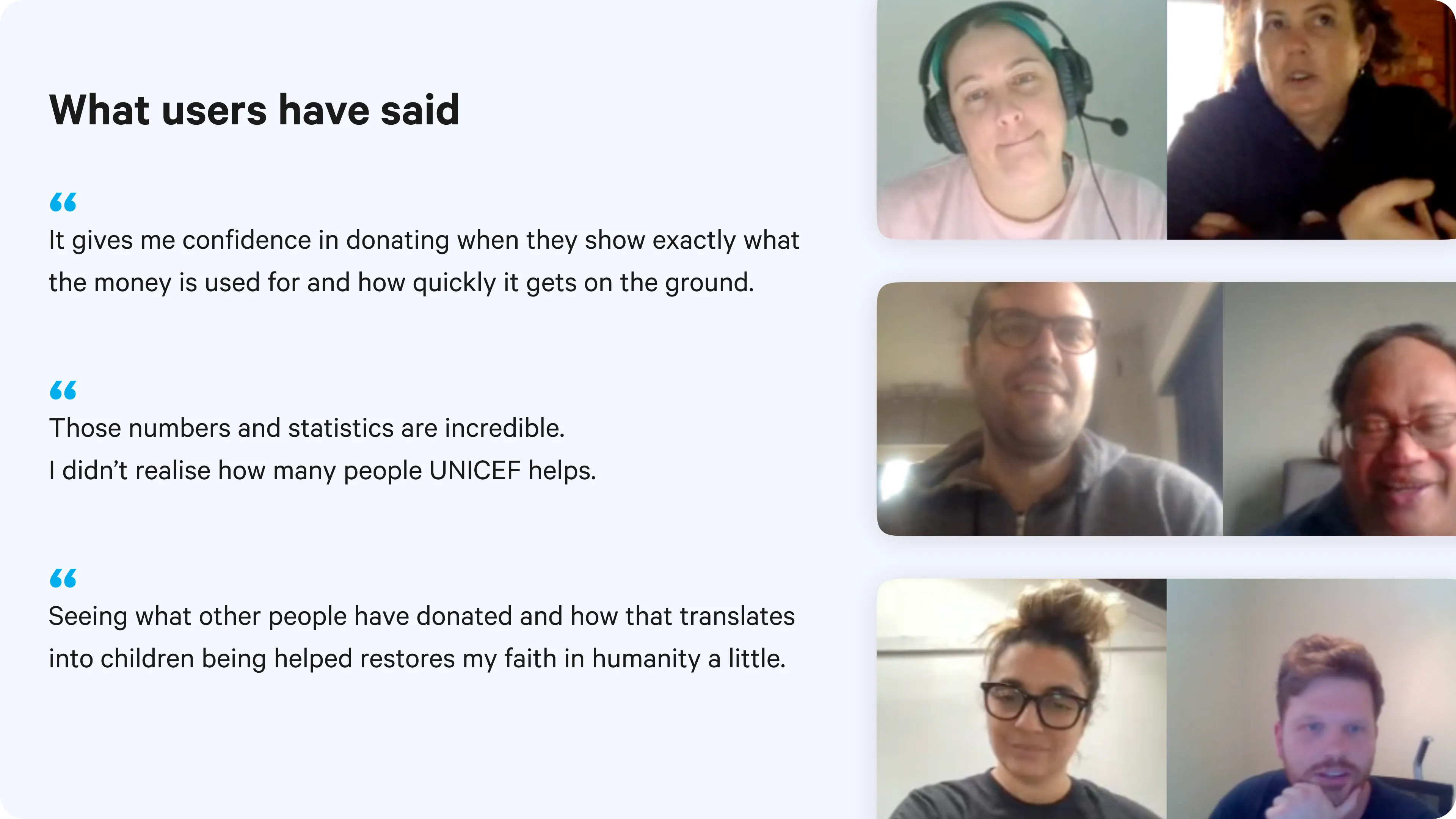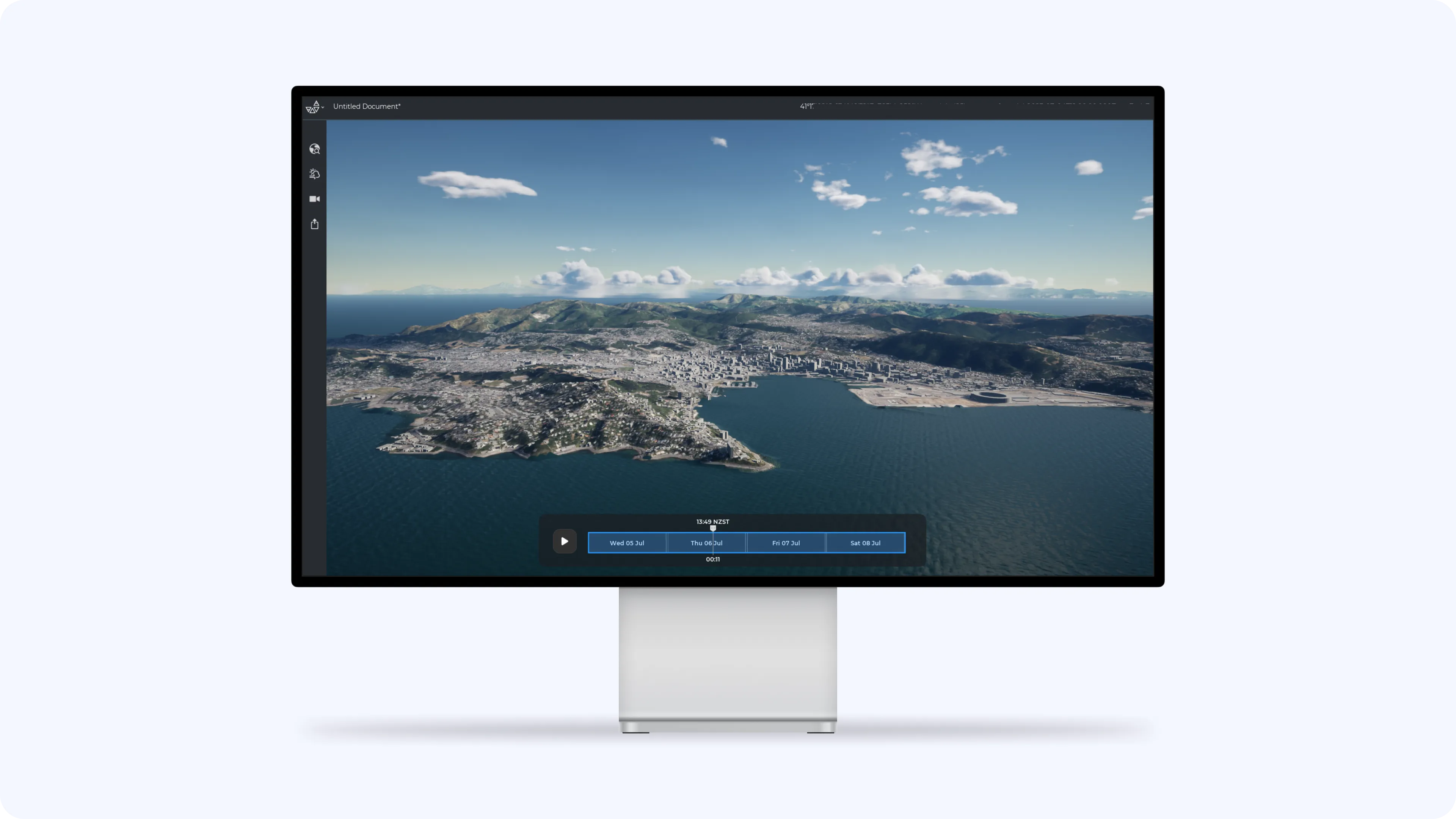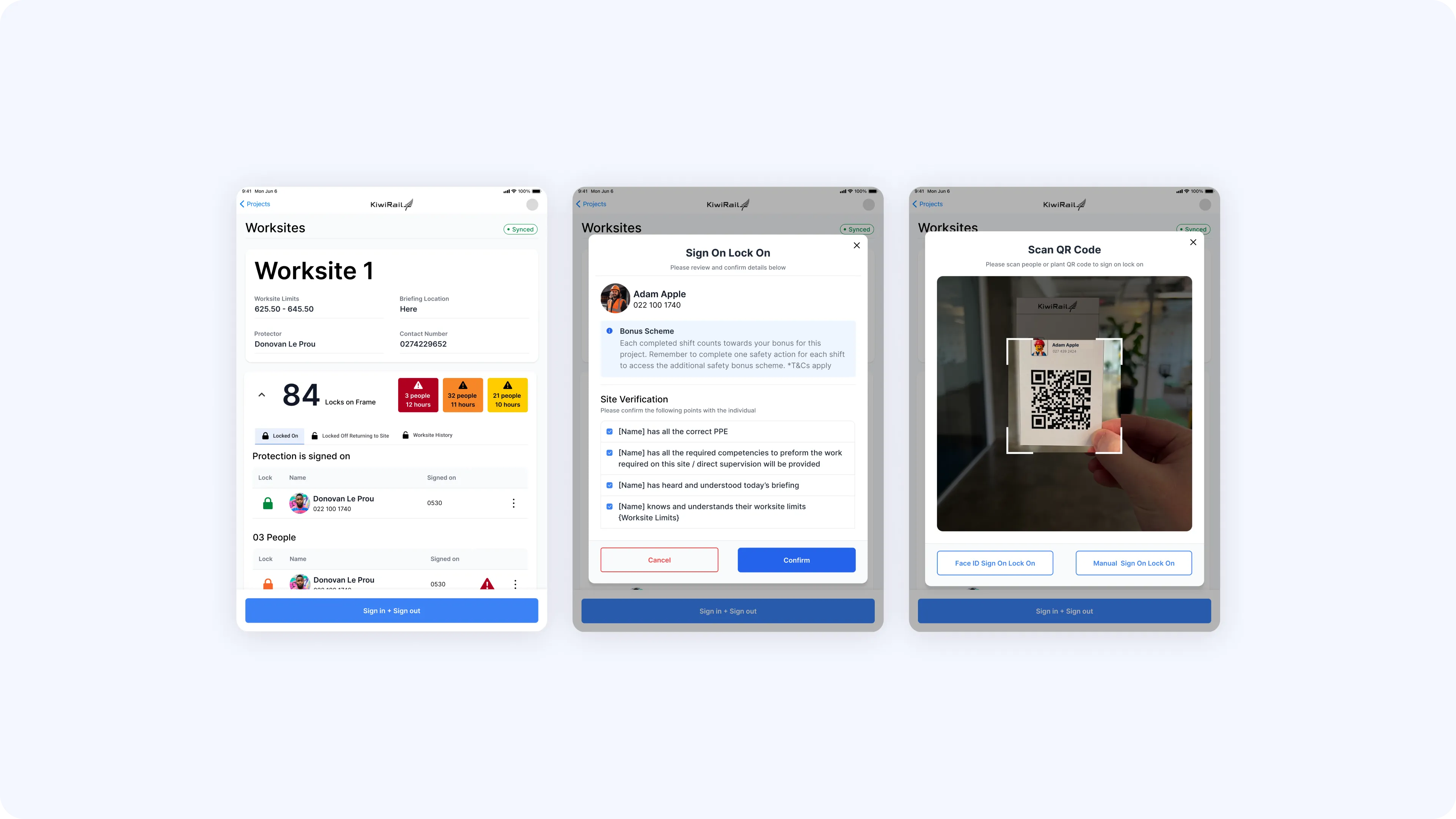
UNICEF
2023
Product Design Lead
Product Lead
Product Owner,
Senior Design - Patricia Tan
UNICEF Aotearoa needed to pivot from face-to-face fundraising to digital-first donor engagement, but their existing website was failing to convert visitors into regular donors. As Product Design Lead, I guided a comprehensive digital transformation that balanced urgent business needs with careful stakeholder management and user-centered design principles.
Challenge: Navigating competing stakeholder priorities while transforming a underperforming donation platform without disrupting existing donor relationships.
My Approach: Applied radical candor with systematic workshop facilitation, user research validation, and phased innovation integration to align stakeholders on strategic priorities.

Building alignment through research
We led a comprehensive discovery phase combining external user insights with internal stakeholder alignment to create a shared foundation for decision-making.
External research:
- Conducted 12 in-depth interviews with both existing UNICEF donors and non-donors across New Zealand.
- Focused on understanding perceptions of the charity, donation motivations, and barriers to giving.
- Uncovered critical misconceptions.
Internal stakeholder research:
- Interviewed UNICEF team members to understand their perspective on the organisation's unique value proposition.
- Gathered feedback on existing digital presence pain points.
- Identified organisational constraints and success metrics.
Three-day workshop facilitation
To translate research into actionable strategy, I designed and facilitated an intensive three day workshop series:
- Day 1: Problem framing and opportunity mapping from research insights.
- Day 2: Story mapping to define user journeys and core experience.
- Day 3: Collaborative wireframing to align on solution direction.
This structured approach ensured all stakeholders contributed to the solution while maintaining focus on user needs and business objectives.


Scalable design system: 'Lego blocks'
Following our three day workshop where we mapped user journeys and wireframed core experiences, the next critical challenge was ensuring UNICEF could independently maintain and evolve their digital presence. Rather than creating a static solution, we needed to build a flexible foundation that would empower their team to respond quickly to emerging needs—especially crucial for an organisation that regularly launches time-sensitive emergency appeals.
Component strategy:
- Created grouped components within Figma representing different content types and layouts.
- Designed components as 'lego blocks' that could be combined in multiple configurations.
- Tested component combinations to ensure visual consistency across different page structures.

Empowering self-sufficiency
This approach directly addressed one of our key strategic goals from the workshop phase: creating a sustainable solution that wouldn't require ongoing design or development support. By teaching UNICEF's team to think in terms of flexible components rather than fixed templates, we equipped them to rapidly create new pages that maintained visual consistency.
Validation process:
- Facilitated working group sessions with the UNICEF marketing team to test real-world content scenarios.
- Upskill the UNICEF marketing team on webpage design.
- Refined component library based on actual usage patterns and content creation workflows.
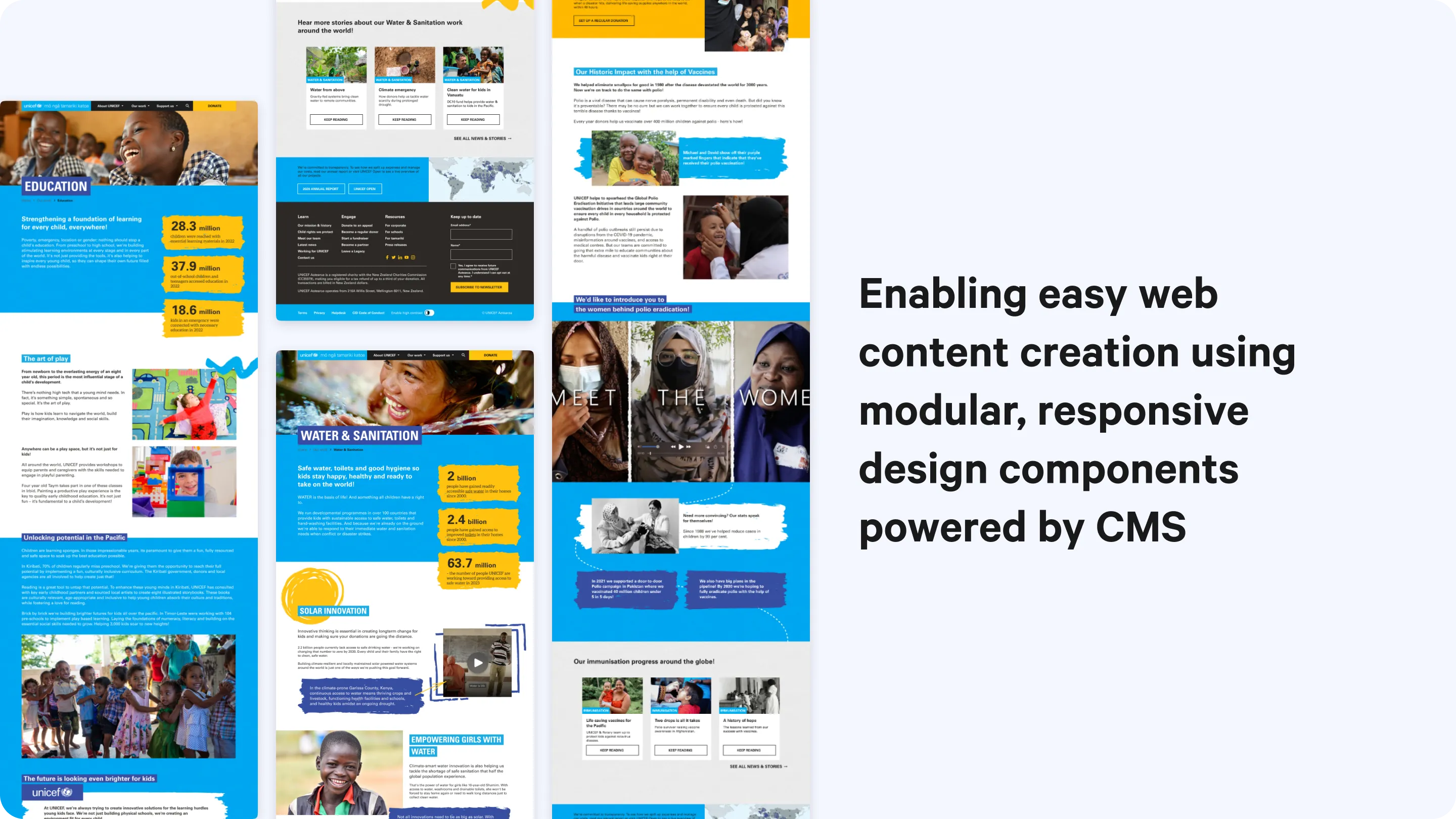
Managing competing priorities
Multiple UNICEF stakeholders pushed for innovative, interactive experiences, while research indicated the need for foundational trust-building and clear value communication.
The approach:
- Directly communicated that innovation without foundation would fail to address core user needs.
- Used story mapping results to demonstrate why foundational elements must come first.
- Proposed an innovation sprint as an addition to, not replacement for core work.
Innovation validation
To satisfy stakeholder desires for innovation while maintaining user focus, I designed a structured validation sprint.
Validation phase:
- Conducted A/B testing with 40 New Zealanders representing target demographics.
- Measured both quantitative performance and qualitative feedback.
- Selected a winning concept based on clear performance superiority.
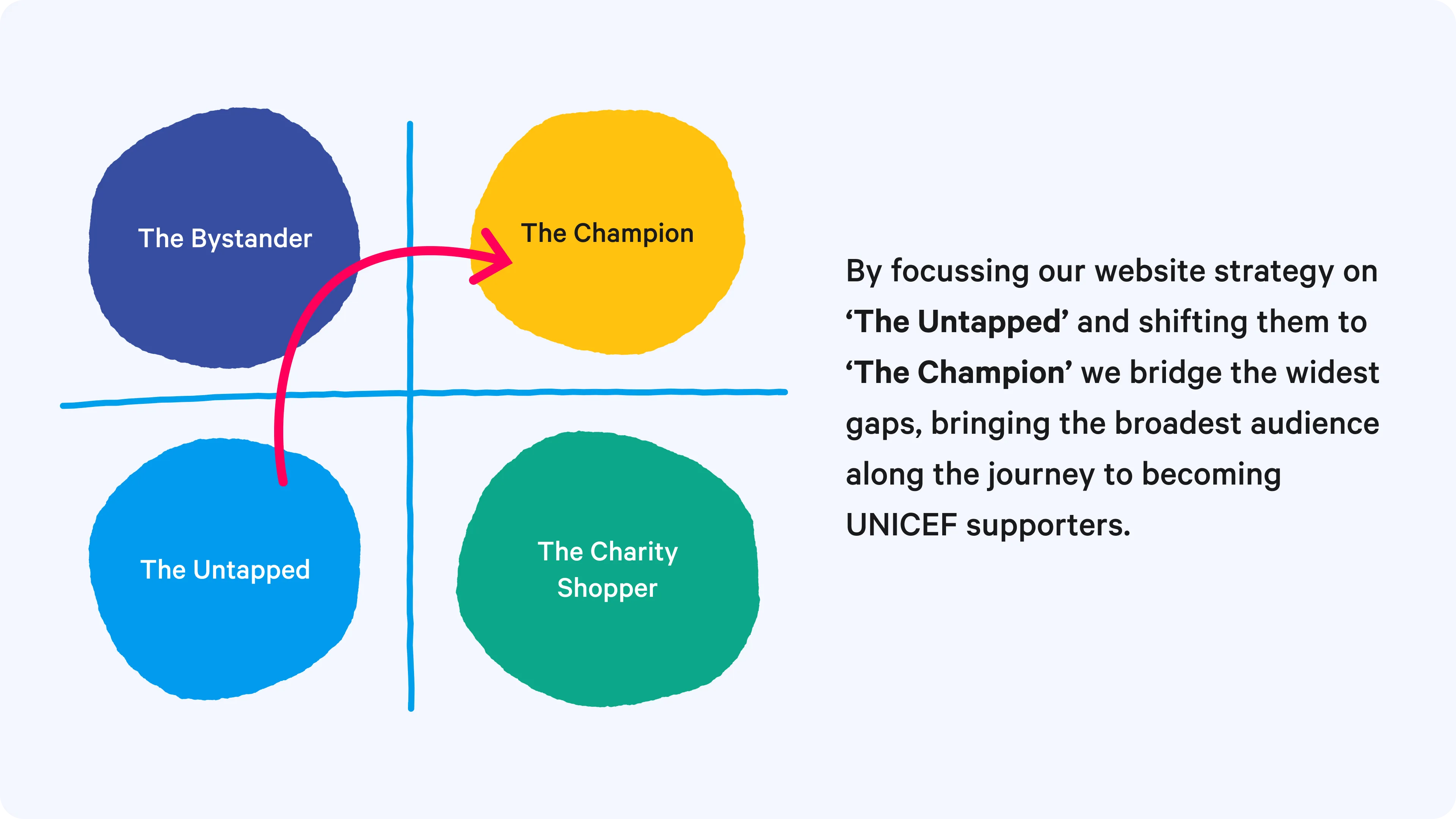
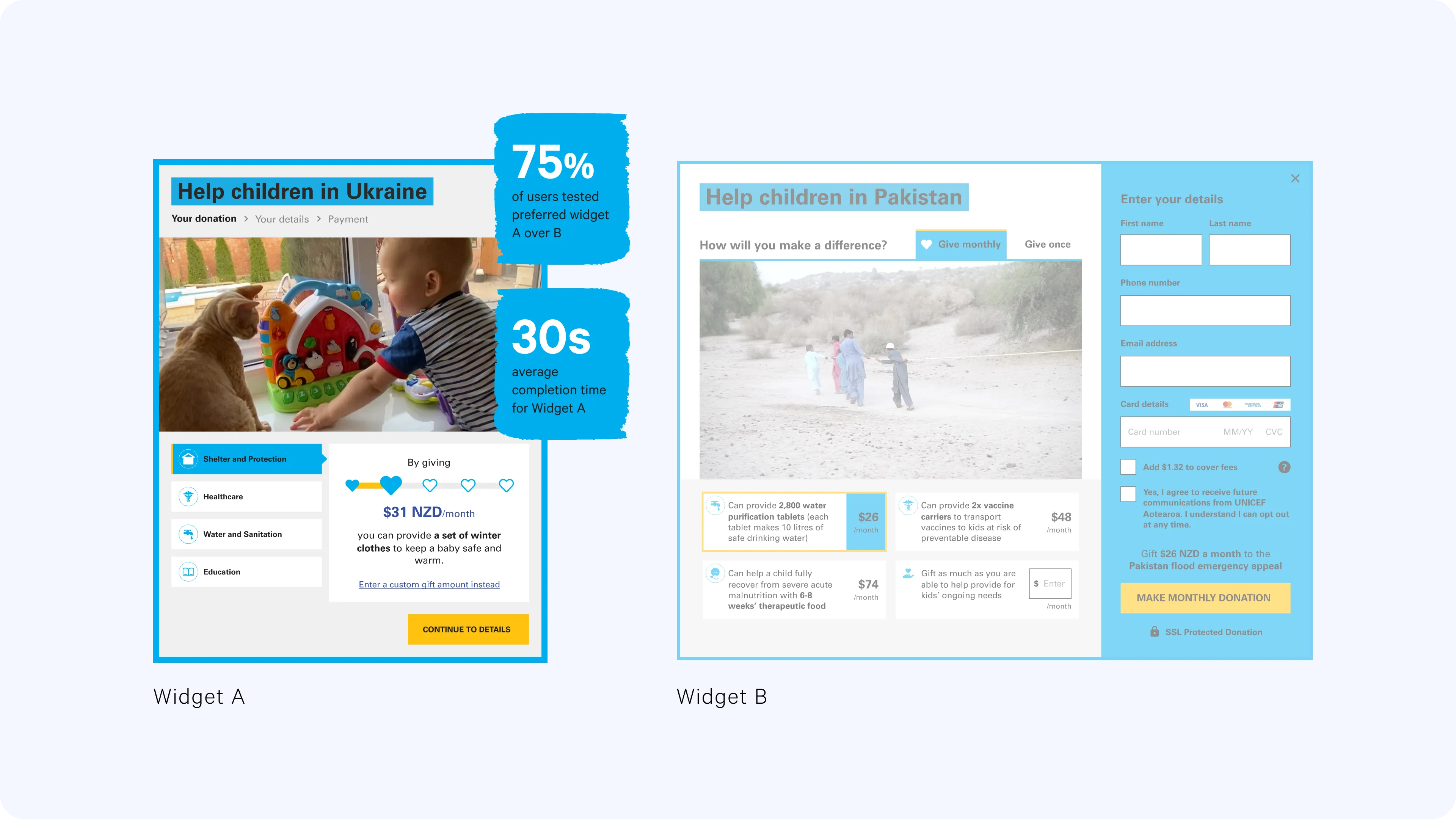
Long-term capabilities
The project succeeded not just in improving metrics but in fundamentally transforming UNICEF Aotearoa's digital capabilities. By prioritising foundational trust-building while systematically integrating innovation, we created a sustainable platform for ongoing growth.
- Self-sufficient content management, eliminating ongoing design/development dependencies.
- Scalable information architecture supporting future feature expansion.
- Strengthened organisational capacity for digital-first engagement.
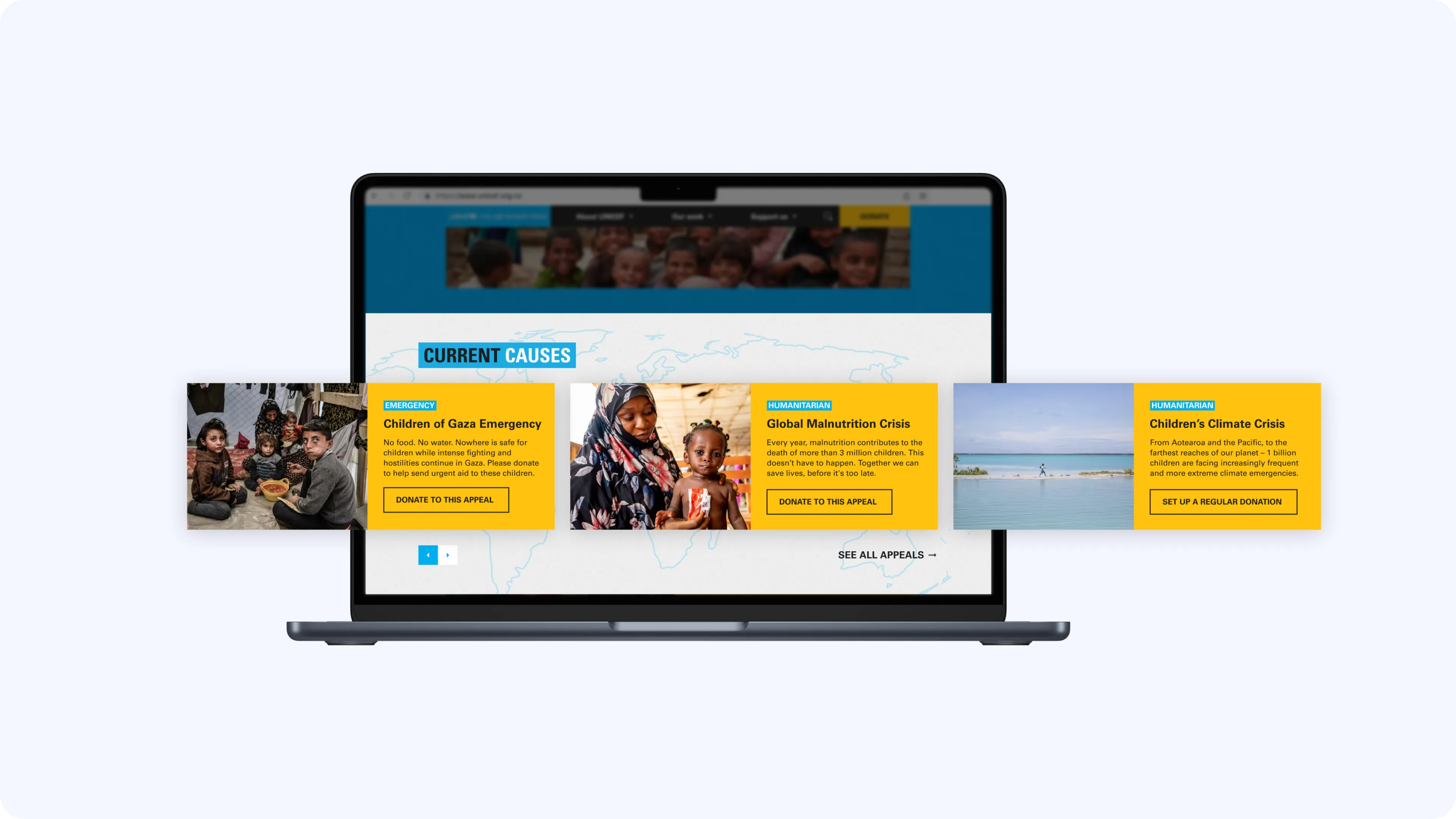
Balancing Service Business Opportunities with Client Needs:
Working with UNICEF reinforced the importance of prioritising client self-sufficiency over expanding project scope. By focussing on building their internal capabilities rather than creating dependencies, we ensured maximum funds could reach children in need—aligning with both our values and their mission.
The power of stakeholder management:
This project demonstrated how direct, honest communication-when paired with systematic validation and collaborative problem-solving can maintain strong relationships while ensuring strategic focus. The key was coupling candor with clear evidence and alternative solutions.
Innovation under constraint:
Managing competing priorities while maintaining quality required systematic approaches to workshop facilitation, research validation, and iterative design. The structured three day workshop format became a repeatable framework for similar complex stakeholder alignment challenges.
